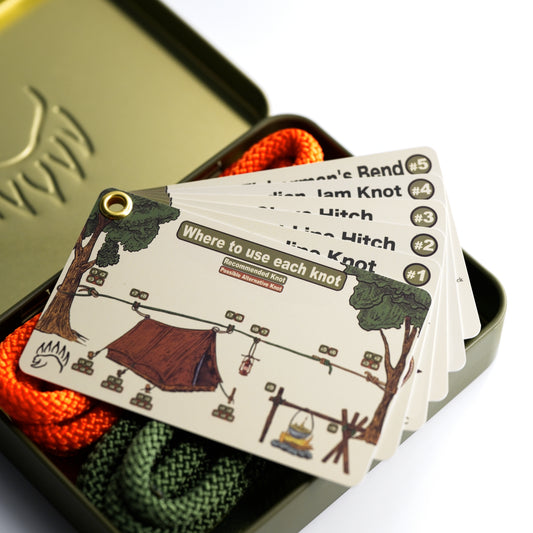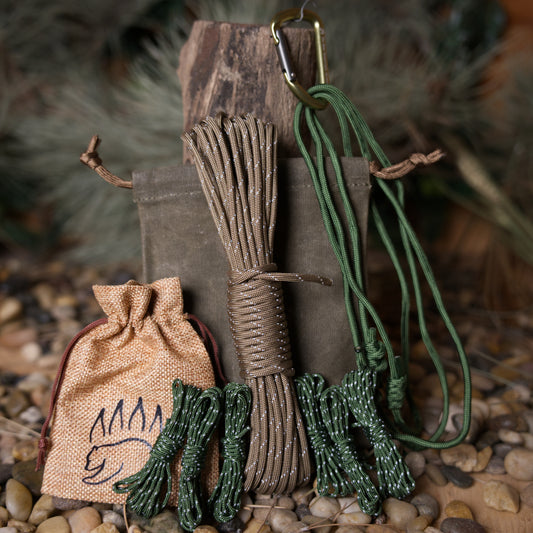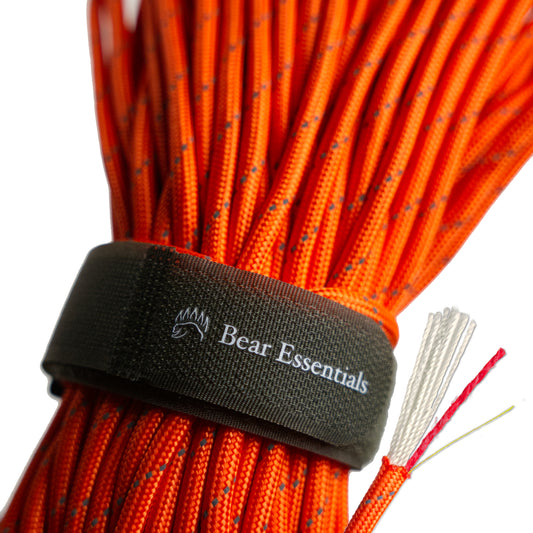How to Tie the Figure Eight Follow Through (Around Object)
Usage
The Figure Eight Follow Through (Around Object) is commonly used to secure a rope to an anchor, such as a tree or carabiner, in climbing and search and rescue. Compared to the Bowline, which is easier to untie but less secure under cyclic loading, this knot offers superior strength and stability. Its robust structure is ideal for critical applications, but it can be harder to untie after heavy loads. This knot is a staple for safe anchoring in outdoor scenarios.
Why Learn the Figure Eight Follow Through (Around Object)?
Its reliable design ensures secure anchoring in demanding conditions. This knot is a trusted choice for climbers and rescuers needing unyielding connections.
Common Uses
-
Climbing:
- Secures ropes to anchors for top-rope or lead climbing.
- Ties into harnesses or fixed points for belaying.
-
Search and Rescue:
- Anchors ropes for high-angle rescue systems.
- Secures litters or stretchers to fixed points.
-
Boating/Marine:
- Ties lines to mooring posts or cleats.
- Secures ropes for towing or anchoring.
-
Arborist:
- Anchors ropes to trees for climbing or rigging.
- Secures lines for pulling or lowering branches.
ABOK Number
(Ashley Book of Knots)
Other Names
Category
|
Notable Features
- High Strength: Holds firm under heavy, cyclic loads without slipping.
- Easy to Inspect: Distinct figure-eight pattern is simple to verify.
- Versatile Use: Suits climbing, rescue, marine, and arborist anchoring.
- Stable Anchor: Maintains security around objects like trees or bolts.
- Widely Recognized: Standard in climbing for its proven reliability.
Variations
No true variations are listed in the provided knot index. For easier untying, leave a slightly looser figure-eight, though this may reduce security slightly.
Similar Knots
Bowline vs. Figure Eight Follow Through (Around Object)
- Pros: Easier to untie after loading, quicker to tie.
- Cons: Less secure under cyclic loads, prone to loosening.
Zeppelin Loop vs. Figure Eight Follow Through (Around Object)
- Pros: Easier to untie and reliable for heavy loads.
- Cons: Less familiar in climbing, not as widely used for anchoring.
History
The Figure Eight Follow Through (Around Object) stems from the traditional figure-eight knot, a cornerstone in climbing for its strength and simplicity. Likely formalized in modern climbing communities, it’s not explicitly listed in The Ashley Book of Knots but shares lineage with figure-eight variants. Its adoption in search and rescue, arborist work, and marine applications highlights its reliability for secure anchoring in high-stakes environments.
Security Level
The Figure Eight Follow Through (Around Object) is highly reliable for anchoring ropes in critical applications, maintaining strength under heavy and cyclic loads. It requires precise tying to ensure the figure-eight is correctly retraced. For slippery ropes or critical tasks, a stopper knot such as the ashley stopper knot on the tail enhances security.
Downsides
- Hard to untie: Can jam after heavy loading, requiring effort to release.
- Time-consuming: Retracing the figure-eight takes longer than simpler knots.
Structure
- Tie a loose figure-eight knot near the working end of the rope, leaving a long tail.
- Pass the working end around the anchor object (e.g., tree, carabiner, or bolt).
- Thread the working end back through the figure-eight knot, retracing its original path.
- Ensure the retraced path mirrors the initial figure-eight, keeping the knot symmetrical.
- Pull the standing part and tail to tighten, leaving at least 12 inches of tail for safety.
Pro Tip: Double-check the retraced figure-eight for accuracy before loading. Use a stopper knot on the tail for extra security in critical applications.
FAQ
Is the Figure Eight Follow Through (Around Object) strong enough for heavy loads?
Yes, it’s robust for climbing and rescue when tied correctly, but always inspect the knot and anchor.
What ropes work best for the Figure Eight Follow Through (Around Object)?
Dynamic or static climbing ropes ensure strength and reliability.
How does the Figure Eight Follow Through (Around Object) compare to the Bowline?
It’s more secure under cyclic loads but harder to untie after heavy use.
Can the Figure Eight Follow Through (Around Object) be used in boating?
Yes, for mooring or anchoring, but it’s less common than marine-specific knots.
Why choose the Figure Eight Follow Through (Around Object) over other anchor knots?
Its strength and reliability make it a standard for critical anchoring tasks.
Important Notes on Safety
Common failure points include improper retracing of the figure-eight or insufficient tail length, which can lead to slipping. Always verify the knot is correctly tied and suited for the task.
Inspect ropes and anchors for wear or damage before tying.
Ensure the figure-eight is symmetrical and fully retraced.
Practice tying and inspecting in low-risk settings first.









